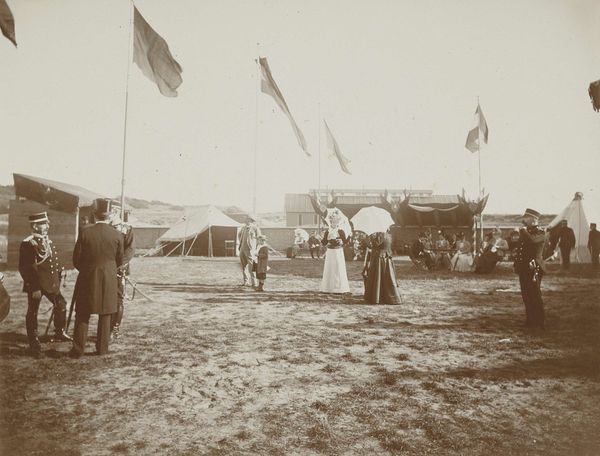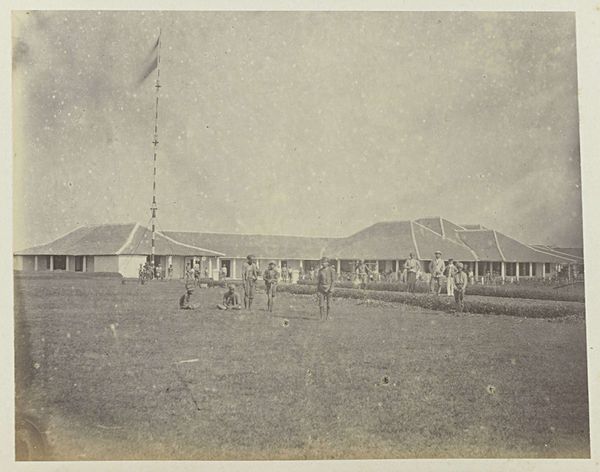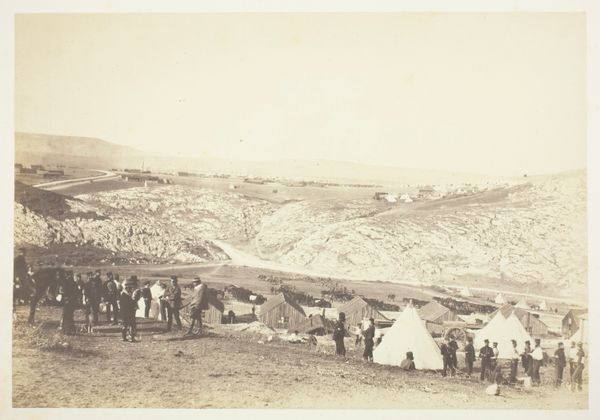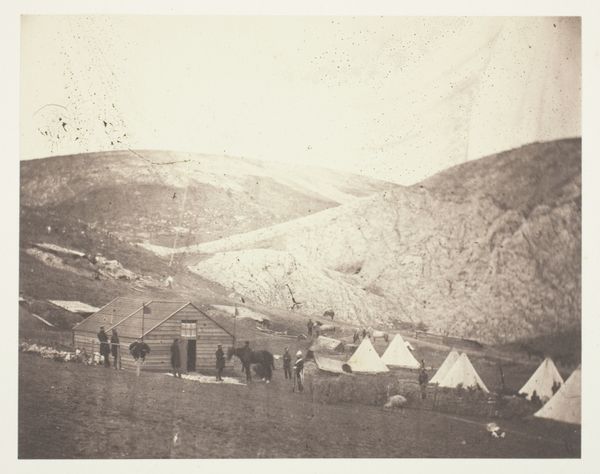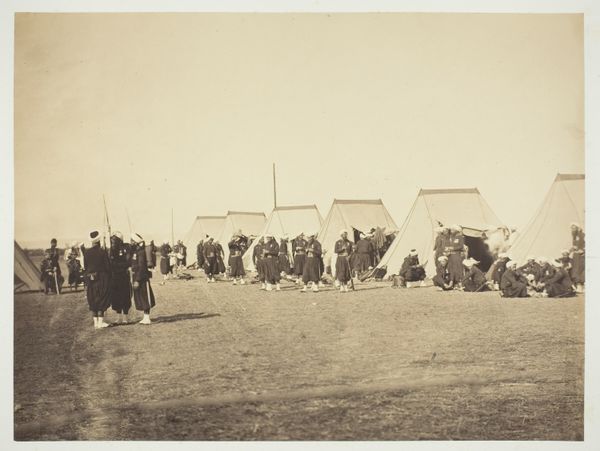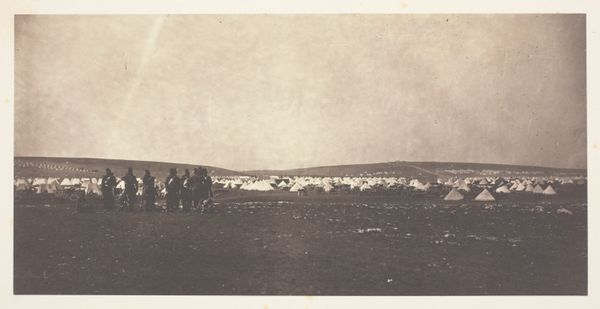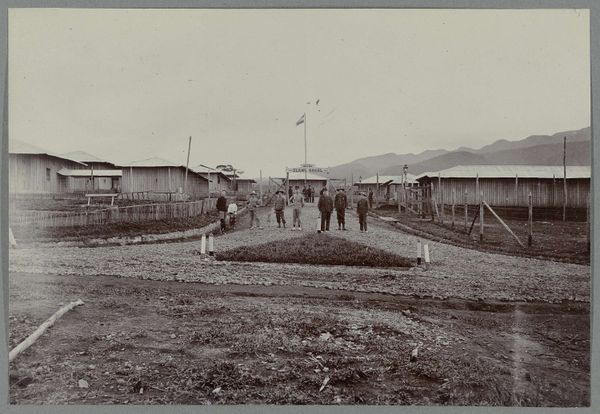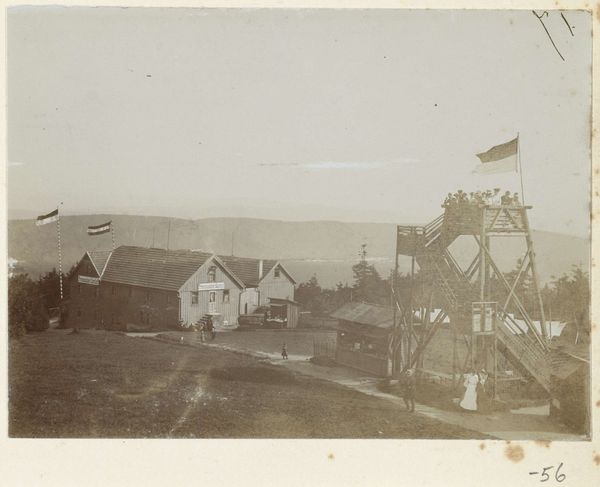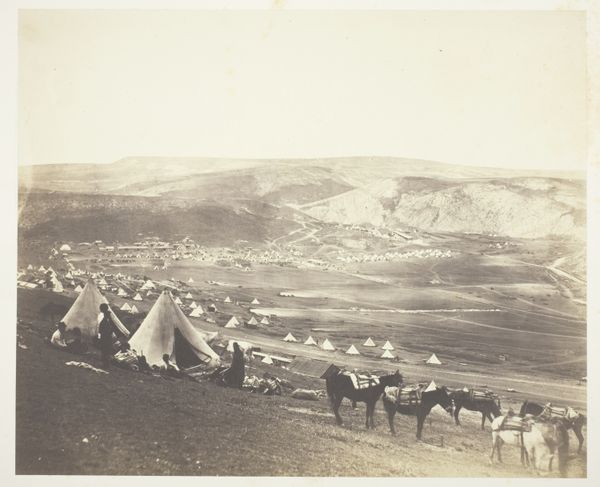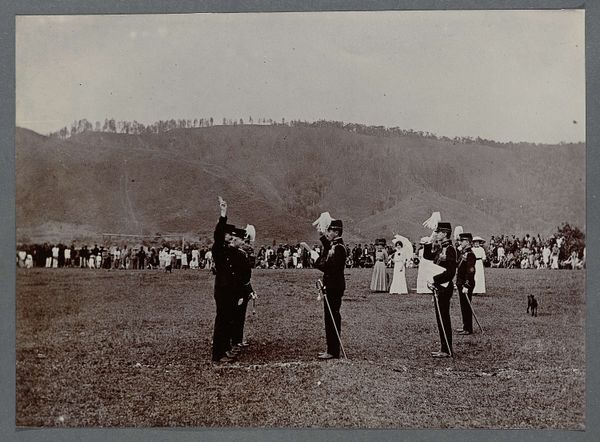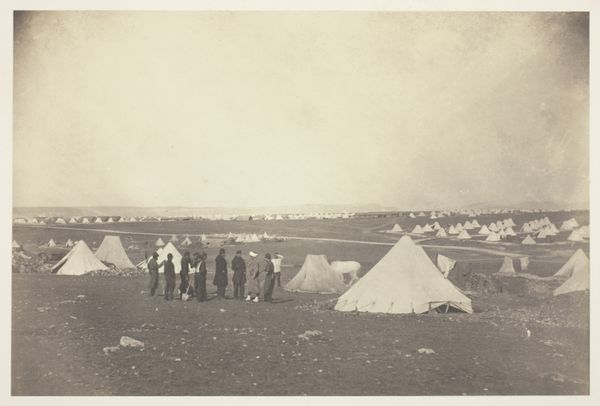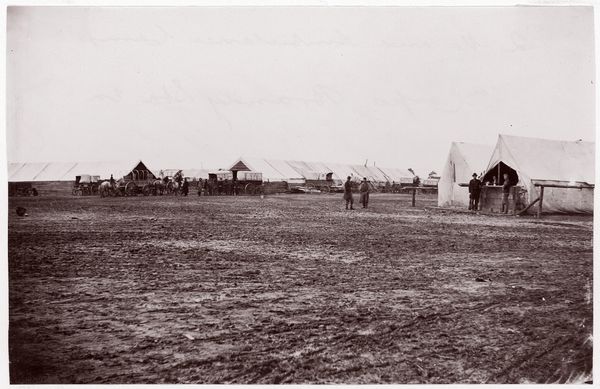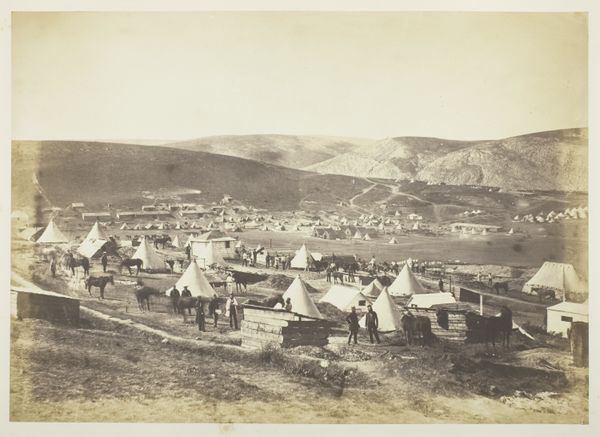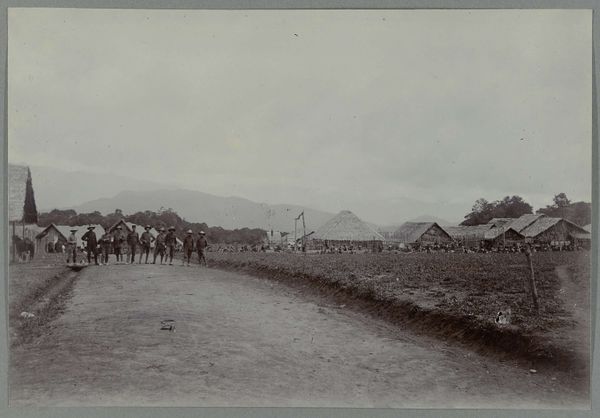
#
excavation photography
#
competition photography
#
black and white photography
#
photo restoration
#
warm monochrome
#
archive photography
#
outdoor photography
#
historical photography
#
monochrome photography
#
outdoor activity
Dimensions: height 168 mm, width 235 mm, height 300 mm, width 358 mm
Copyright: Rijks Museum: Open Domain
Curator: This photograph, titled "Bezoek van prins Hendrik aan militaire post," captures Prince Hendrik's visit to a military outpost sometime between 1901 and 1915. It's part of the Rijksmuseum's collection. Editor: Immediately, I'm struck by the muted palette and formality. It feels very staged, yet there's something about the slightly bleached-out quality of the print that speaks to a particular moment in photographic history, a certain way of image making rooted in specific material conditions. Curator: The photograph employs several potent visual symbols. The flags, for instance, denote nationhood, power, and the pomp and circumstance of a royal visit. Even the postures of the figures are telling. Notice the military personnel standing rigidly to attention. What sort of labor went into holding that pose for the camera? Editor: Exactly. We can see the relationship between class and work through these uniforms. What materials were used, who produced them, and what did they signify about status and allegiance at that time? Beyond their functionality, these garments also convey societal expectations of those in military service. Also note, tents made of stretched canvas serve both a practical and symbolic role, temporary but ordered shelter, which suggests mobility and resourcefulness, hallmarks of military life. Curator: I am intrigued by the two young boys who seem to be outside of this group of authority. Children symbolize the future, a connection to future dynastic successes. This juxtaposition can tell us a lot about power, succession, and lasting memory. Editor: Indeed, and look at the way the sand dunes form a hazy backdrop; one has to wonder about the access to location. Also note the seating arrangement - while people may have walked from a central meeting point to reach this area in the dunes, furniture needs to have been specifically acquired, made from perhaps a specific lumber that had a certain reputation or provenance. The image becomes a fascinating tableau of privilege, labor, and imperial ambition when you start to consider it as a product of deliberate construction. Curator: Yes, understanding the image involves analyzing all these elements: what they stood for then and how they continue to resonate now. Editor: Absolutely. By analyzing material culture – the tents, the clothing, even the photographic paper itself – we understand a society that placed importance on symbols. Curator: Indeed, symbols of order, nationhood, and legacy. Editor: Leaving a lasting imprint, both materially and ideologically.
Comments
No comments
Be the first to comment and join the conversation on the ultimate creative platform.
